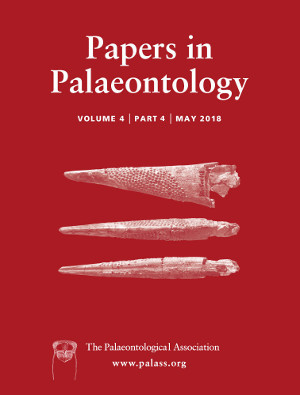Reg. Charity No. 1168330

New Anisian (Middle Triassic) ammonoids are reported from British Columbia (BC), Canada. Eight species are reported, including one new genus and two new species: Eofrechites roopnarini gen. et sp. nov. and Parafrechites cordeyi sp. nov. New ammonoid subzones are recognized, leading to improved correlation between BC and Nevada: the Hollandites minor Zone is correlated with the interval intercalated between the Unionvillites hadleyi Subzone and the Pseudodanubites nicholsi Subzone; an Eogymnotoceras thompsoni – Anagymnotoceras spivaki Zone is recognized in BC and correlated with the interval intercalated between the Augustaceras escheri and Anagymnotoceras spivaki subzones; Gymnotoceras weitschati is found in BC for the first time and co‐occurs with Eogymnotoceras deleeni, suggesting either a rough correlation with the sum of G. weitschati, G. mimetus and G. rotelliformis zones of Nevada or a strong diachronism of G. weitschati and G. rotelliformis along the Palaeopacific margin of North America. The rare occurrences of low‐palaeolatitude restricted species in the mid‐palaeolatitude record indicate that exchanges were more frequent than previously documented during the Anisian. Despite a preservation bias in north‐eastern BC due to the lower carbonate content, it clearly emerges that the enhanced sampling effort leads to maximal association zones with duration of the same order of magnitude as those of Nevada, indicating that evolutionary turnover rates of ammonoids did not decrease toward higher latitude. Therefore, the common view that geographically differentiated evolutionary rates originates from the latitudinal gradient of taxonomic richness does not hold for Anisian ammonoid faunas along the Palaeopacific margin of North America.